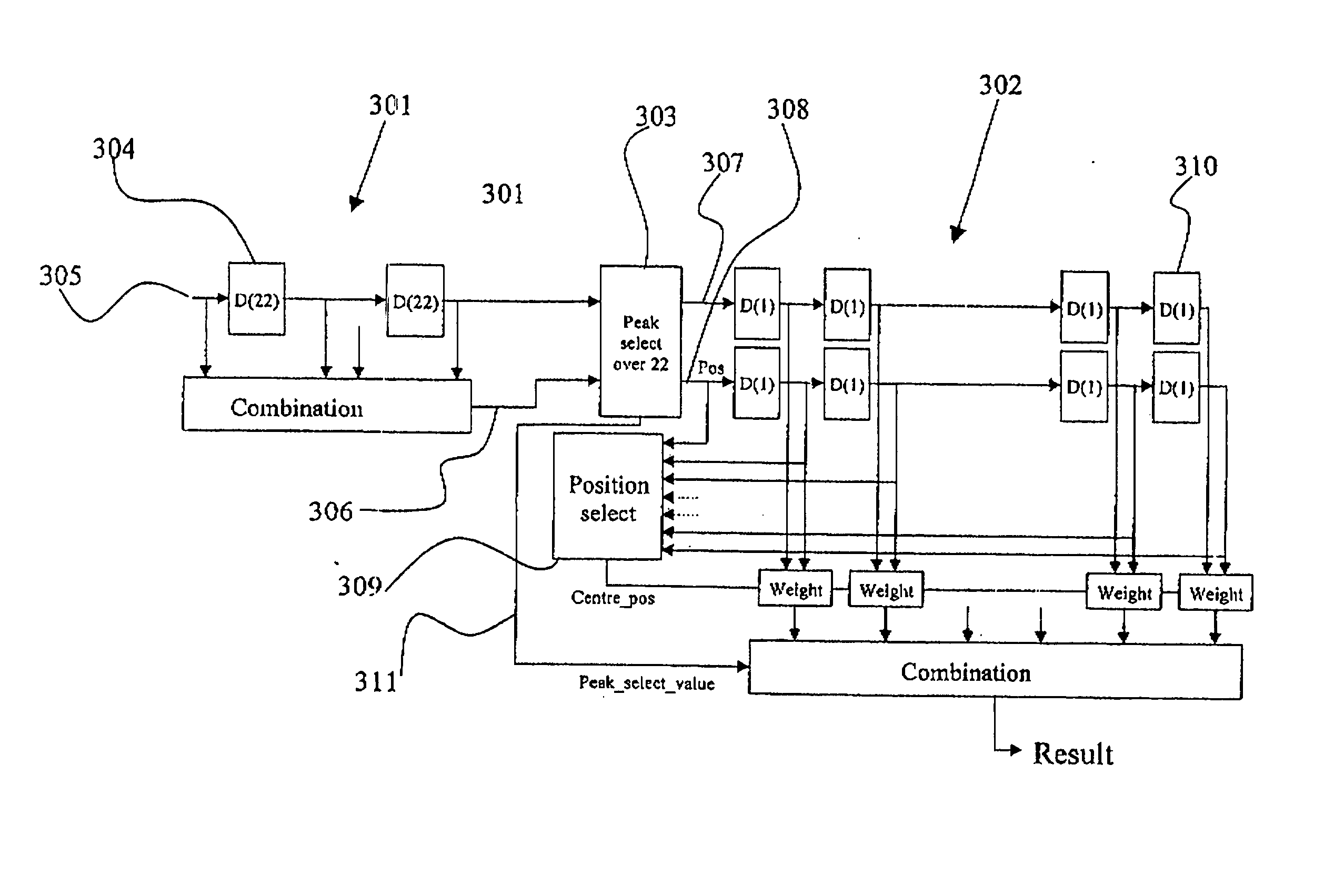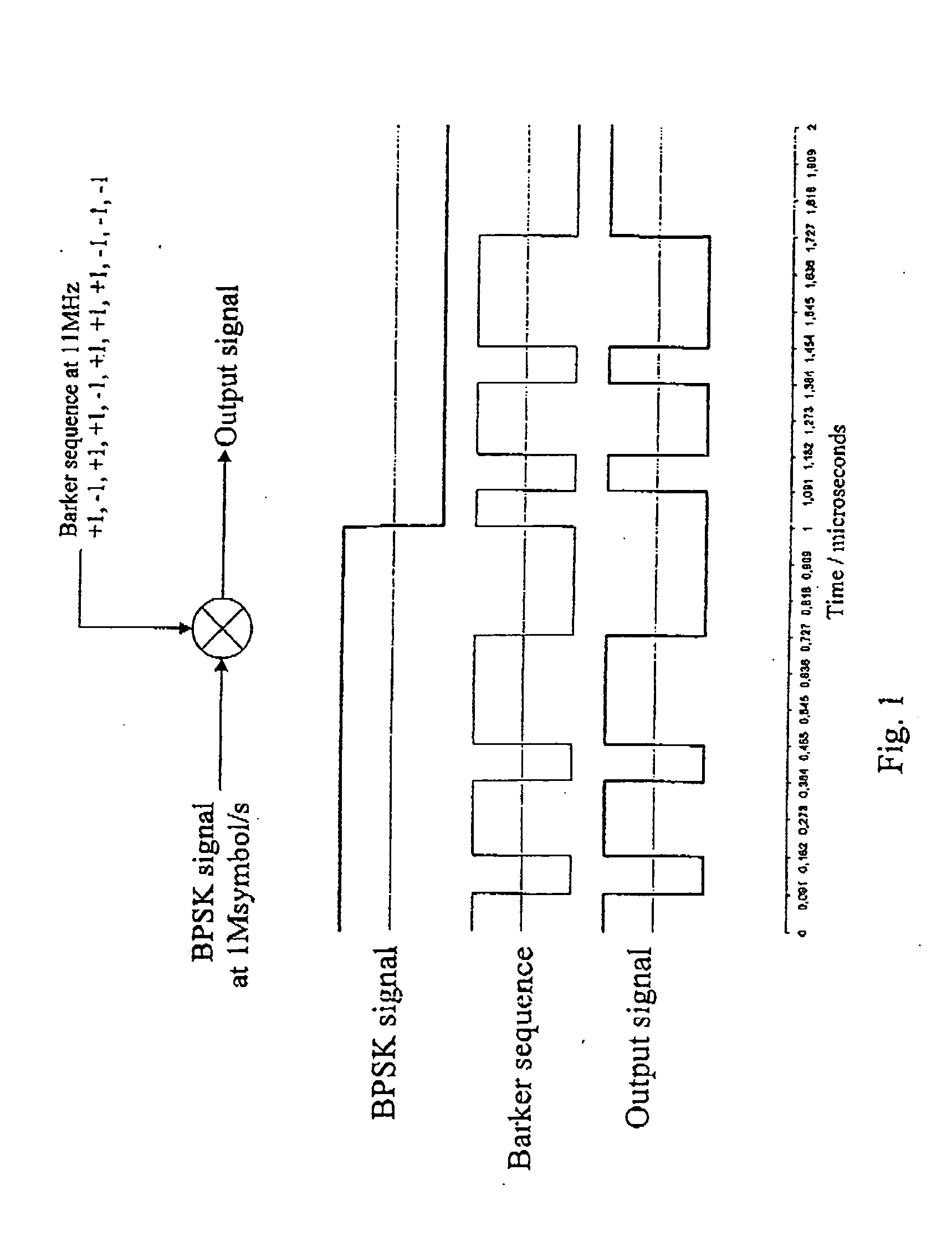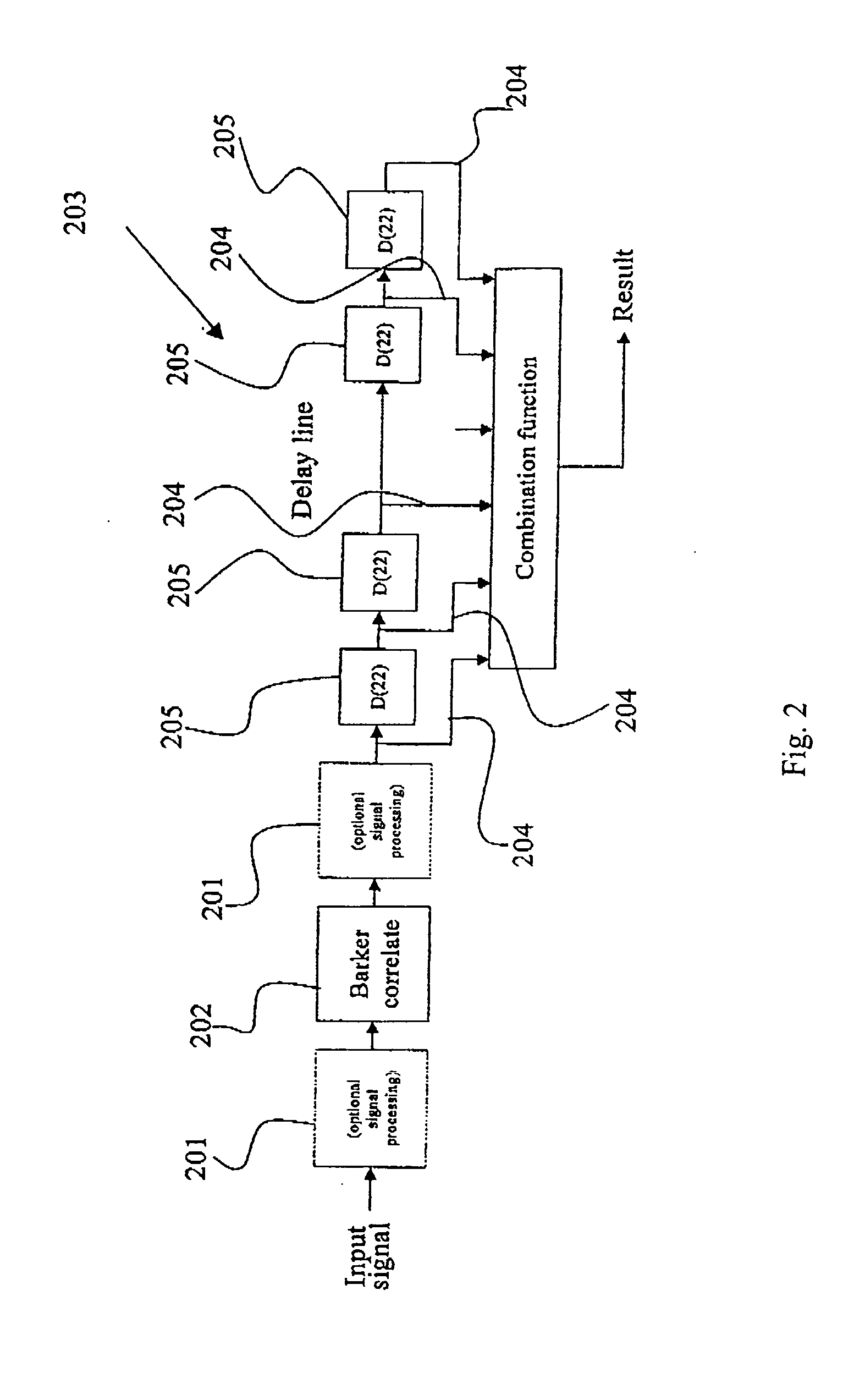Sliding window
a sliding window and signal detection technology, applied in the field of appratus and a signal detection method, can solve the problems of difficult to detect, difficult to determine, and difficulty in detecting, so as to reduce the storage requirements of barker detection function
- Summary
- Abstract
- Description
- Claims
- Application Information
AI Technical Summary
Benefits of technology
Problems solved by technology
Method used
Image
Examples
Embodiment Construction
[0048] In the following description, for purposes of explanation and not limitation, specific details are set forth, such as particular techniques and applications in order to provide a thorough understanding of the present invention. However, it will be apparent to one skilled in the art that the present invention may be practiced in other embodiments that depart from these specific details. In other instances, detailed descriptions of well-known methods and apparatuses are omitted so as not to obscure the description of the present invention with unnecessary details.
[0049]FIGS. 1 and 2 has been briefly discussed in the background and will not further be dealt with.
[0050] An apparatus according to a preferred embodiment of the invention is shown in FIG. 3. The apparatus comprises a second correlator 301 and a third correlator 302. The first correlator is the Barker correlator 202 shown in FIG. 2. The apparatus further comprises a Peak selector 303.
[0051] The second correlator 30...
PUM
 Login to view more
Login to view more Abstract
Description
Claims
Application Information
 Login to view more
Login to view more - R&D Engineer
- R&D Manager
- IP Professional
- Industry Leading Data Capabilities
- Powerful AI technology
- Patent DNA Extraction
Browse by: Latest US Patents, China's latest patents, Technical Efficacy Thesaurus, Application Domain, Technology Topic.
© 2024 PatSnap. All rights reserved.Legal|Privacy policy|Modern Slavery Act Transparency Statement|Sitemap



